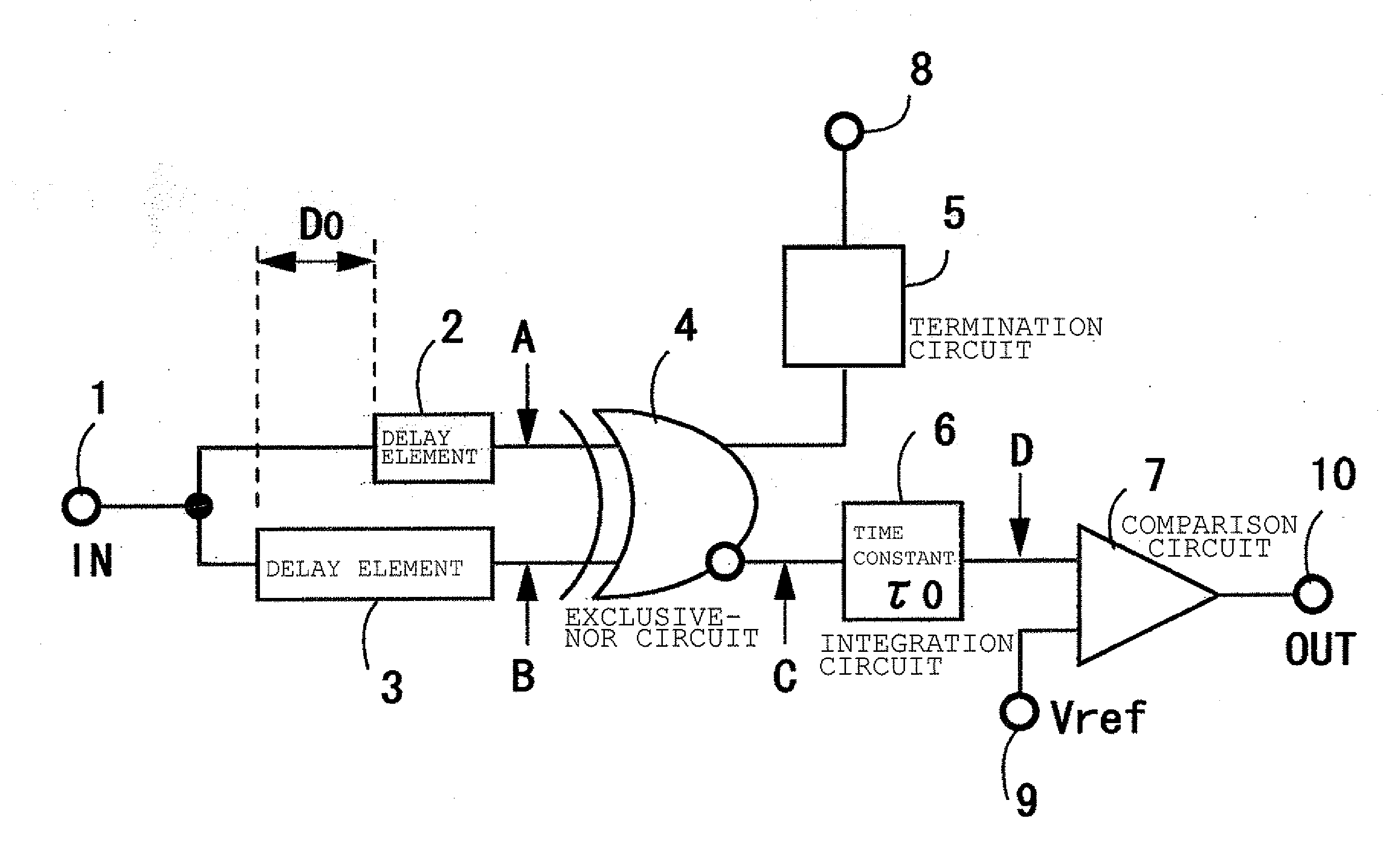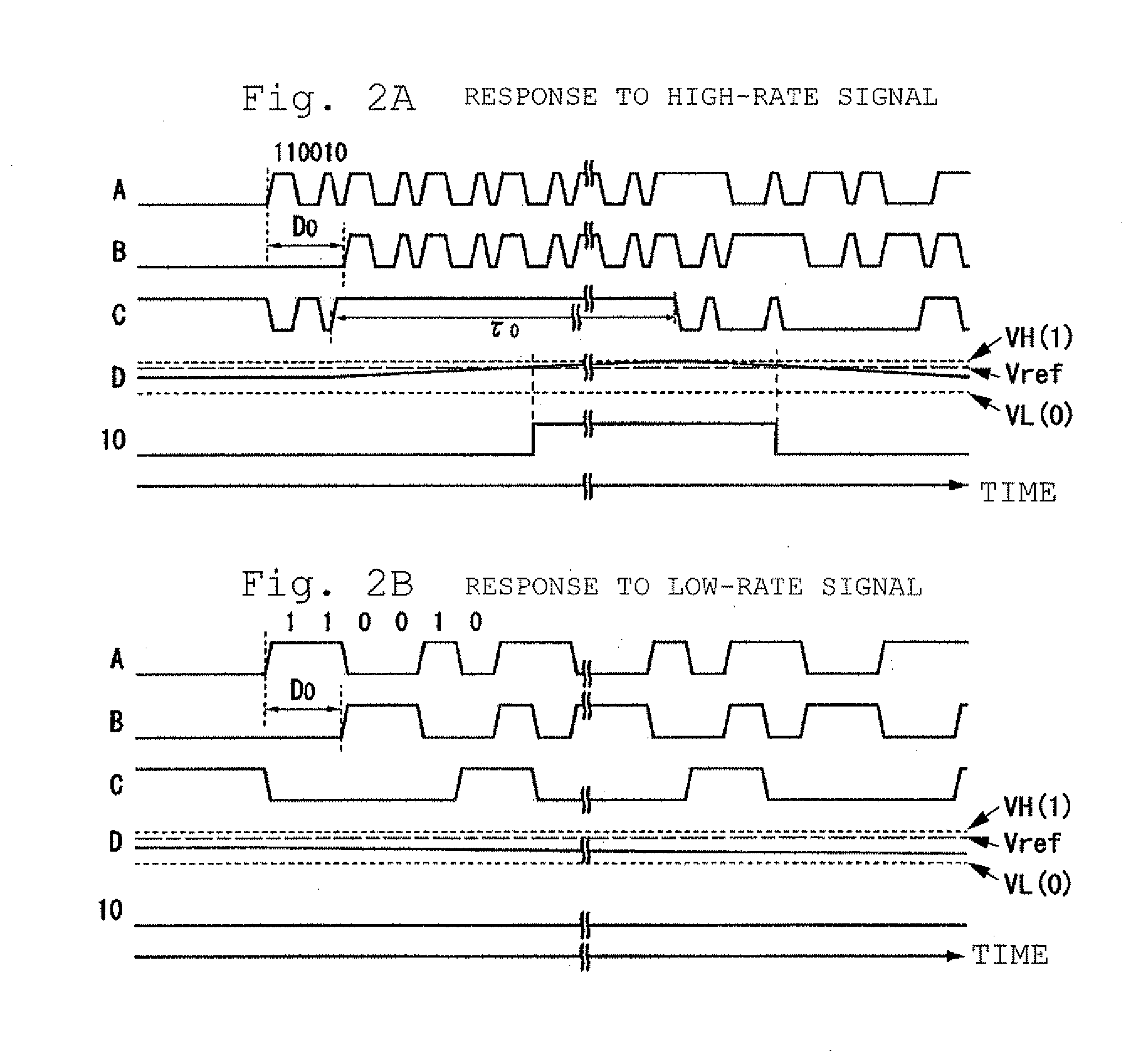Bit-Rate Discrimination Method and Its Apparatus
a bit-rate discrimination and bit-rate technology, applied in the field of bit-rate discrimination methods and bit-rate discrimination apparatuses, can solve the problems of bit-rate changes and the inability to discriminate at high speed, and achieve the effect of reducing the integration tim
- Summary
- Abstract
- Description
- Claims
- Application Information
AI Technical Summary
Benefits of technology
Problems solved by technology
Method used
Image
Examples
first embodiment
[0105]A first embodiment of the invention will be described with reference to the accompanying drawings. The first embodiment described below is examples of the invention, and the invention is not limited to the examples. In the first embodiment and the drawings related to the first embodiment, the same component is denoted by the same numeral.
first example
[0106]FIG. 1 illustrates a configuration of a bit-rate discrimination circuit according to a first example of the invention. Referring to FIG. 1, the numeral 1 denotes an input terminal, the numerals 2 and 3 denote delay circuits, the numeral 4 denotes an exclusive-NOR circuit, the numeral 5 denotes a termination circuit, the numeral 6 denotes an integrator (time constant of τ0), the numeral 7 denotes a comparator, the numeral 8 denotes a power supply or a ground, the numeral 9 denotes a reference voltage input terminal, and the numeral 10 denotes an output terminal (alphabets in FIG. 1 are described in the description of FIG. 2). For the sake of convenience, in the first example, it is assumed that there are two kinds of bit-rates, that is, a high rate and a low rate, in the transmitted signal.
[0107]In the delay circuits 2 and 3 connected to nodes A and 9 of the exclusive-NOR circuit 4, a delay time difference between the delay circuits 2 and 3 is adjusted to a length of an integra...
second example
[0112]FIG. 3 illustrates a configuration of a bit-rate discrimination circuit according to a second example of the invention. In FIG. 3, the component similar to that of FIG. 1 is denoted by the same numeral, the numerals 11 and 12 denote delay circuits, and the numeral 13 denotes an integrator (time constant τ1). In the second example, it is also assumed that there are two kinds of bit-rates, that is, the high rate and the low rate, in the transmitted signal. The configuration of FIG. 3 differs from that of FIG. 1 only in that the delay time difference between the delay circuits 11 and 12 is adjusted to a length of an integral multiple of the preamble pattern period of the low bit-rate signal. For the sake of convenience, the delay circuits 11 and 12 are connected in FIG. 3. When the delay of one of the delay circuits is equal to the length of the integral multiple, only one of the delay circuits may be provided. In FIG. 3, the input-side terminals of the delay circuits 11 and 12 a...
PUM
 Login to View More
Login to View More Abstract
Description
Claims
Application Information
 Login to View More
Login to View More - R&D
- Intellectual Property
- Life Sciences
- Materials
- Tech Scout
- Unparalleled Data Quality
- Higher Quality Content
- 60% Fewer Hallucinations
Browse by: Latest US Patents, China's latest patents, Technical Efficacy Thesaurus, Application Domain, Technology Topic, Popular Technical Reports.
© 2025 PatSnap. All rights reserved.Legal|Privacy policy|Modern Slavery Act Transparency Statement|Sitemap|About US| Contact US: help@patsnap.com



